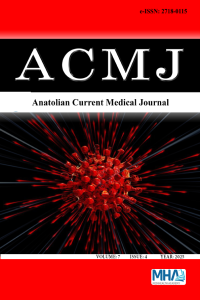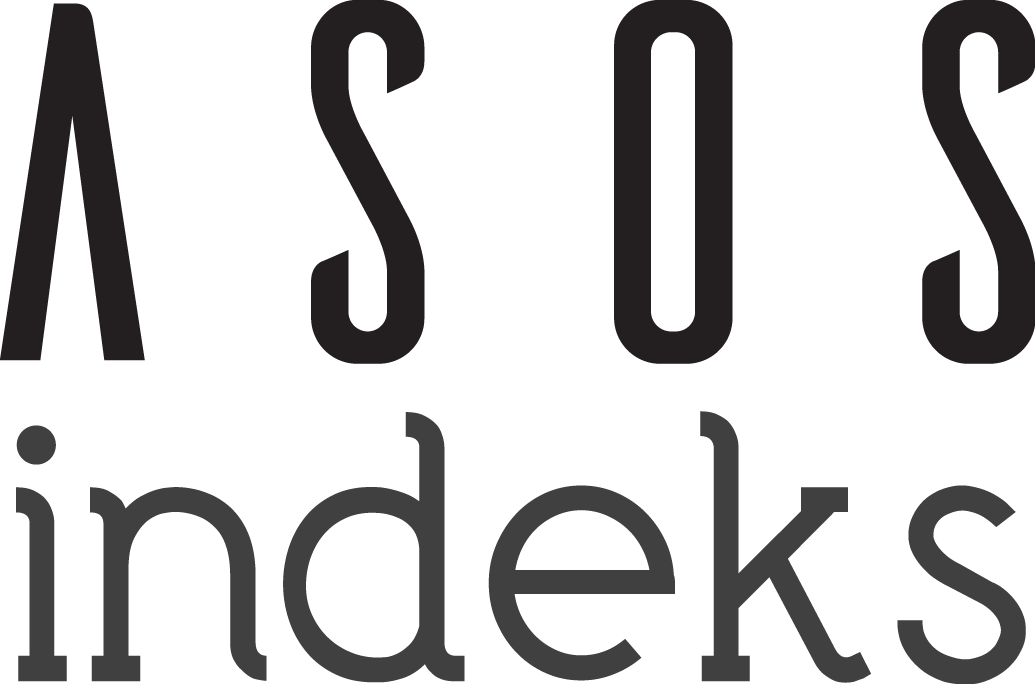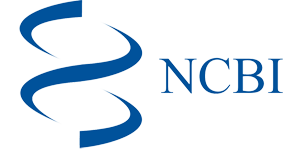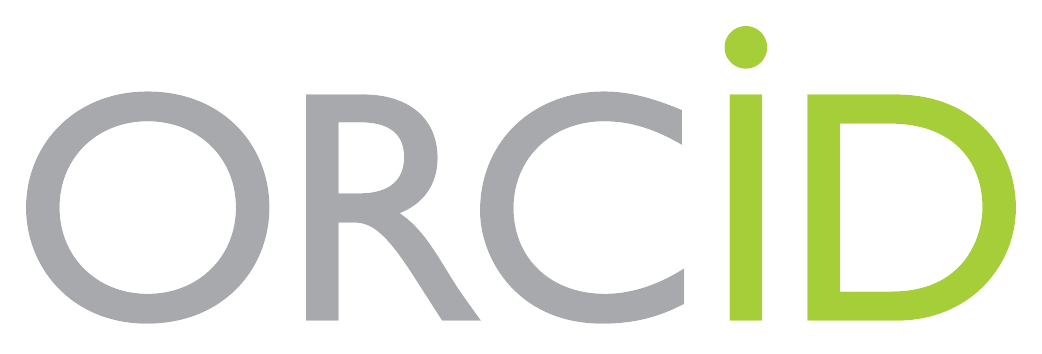Posterior malleolus fixation in trimalleolar fractures: comparison of functional outcomes of plate and screw methods
Abstract
Aims: This study was planned to compare the clinical outcomes of plate and cannulated screw fixation methods for the posterior malleolus (PM) component in trimalleolar ankle fractures and to evaluate the effect of the time from trauma to surgery and the presence of dislocation on postoperative function.
Methods: This retrospective study included 44 patients who underwent surgical treatment with PM fixation for trimalleolar fractures between 2019 and 2023. Patients were grouped by fixation method: screw (n=19) and plate (n=25), with all surgeries performed via a posterolateral approach. Functional outcomes were assessed using the American Orthopaedic Foot and Ankle Society (AOFAS) ankle-hindfoot score at 6, 12, and 24 months. The presence of ankle dislocation and time from trauma to surgery (<24 vs. >24 hours) were recorded.
Results: AOFAS scores showed no significant difference between plate and screw groups at any time point (p>0.05). However, patients with dislocation had significantly lower scores at all follow-ups (p<0.05). Timing of surgery had no significant effect on outcomes. Loss of reduction was rare (n=2).
Conclusion: Plate and screw fixation yield comparable functional outcomes in PM fractures. Dislocation negatively impacts recovery, while surgical timing does not. Emphasis should be placed on anatomical reduction and addressing prognostic factors for optimal results.
Ethical Statement
This research was approved by the"1 nolu Tıbbi Araştırmalar Bilimsel ve Etik Değerlendirme Kurulu (TABED)" (Approval Date 26/03/2025)
References
- Pflüger P, Braun KF, Mair O, Kirchhoff C, Biberthaler P, Crönlein M. Current management of trimalleolar ankle fractures. EFORT Open Rev. 2021;6(8):692-703. doi:10.1302/2058-5241.6.200138
- Kang C, Hwang DS. Screw fixation of the posterior malleolus fragment in ankle fracture. Foot Ankle Int. 2019;40(11):1288-1294. doi:10.1177/ 1071100719865895
- Patel S, Baburaj V, Sharma S, Mason LW, Dhillon MS. Influence of posterior malleolar fragment morphology on the outcomes of trimalleolar fractures: a systematic review and meta-analysis. Foot Ankle Surg. 2022;28(8):1337-1344. doi:10.1016/j.fas.2022.06.012
- Yang L, Yin G, Zhu J, et al. Posterolateral approach for posterior malleolus fixation in ankle fractures: functional and radiological outcome based on Bartonicek classification. Arch Orthop Trauma Surg. 2023;143(7):4099-4109. doi:10.1007/s00402-022-04620-0
- Zhang K, Cui R, Gu Y, et al. Posteroanterior lag screws versus posterior buttress plate fixation of posterior malleolar fragments in spiral tibial shaft fracture. J Foot Ankle Surg. 2020;59(4):768-773. doi:10.1053/j.jfas. 2019.09.039
- Wang J, Jia HB, Zhao JG, Wang J, Zeng XT. Plate versus screws fixation for the posterior malleolar fragment in trimalleolar ankle fractures. Injury. 2023;54(2):761-767. doi:10.1016/j.injury.2022.10.032
- Liu Z, Tang G, Guo S, Cai B, Li Q. Therapeutic effects of internal fixation with support plates and cannulated screws via the posterolateral approach on supination external rotation stage IV ankle fracture. Pak J Med Sci. 2020;36(3):438-444. doi:10.12669/pjms.36.3.1671
- Tu TY, Huang ST, Chou YJ. Comparison of plate versus screw internal fixation in the treatment of posterior malleolar fracture: a systematic review and meta-analysis. Foot Ankle Surg. 2024;30(3):191-218. doi:10. 1016/j.fas.2023.12.004
- Espinosa-Uribe A, Arrambide-Garza FJ, De León-Gutiérrez H, et al. Screws versus plate with screws for osteosynthesis of the posterior malleolus: a systematic review and meta-analysis. Acta Ortop Mex. 2023;37(3):183-190.
- Analay Akbaba Y, Celik D, Ogut RT. Translation, cross-cultural adaptation, reliability, and validity of Turkish version of the American Orthopaedic Foot and Ankle Society Ankle-Hindfoot Scale. J Foot Ankle Surg. 2016;55(6):1139-1142. doi:10.1053/j.jfas.2016.06.001
- Terstegen J, Weel H, Frosch KH, Rolvien T, Schlickewei C, Mueller E. Classifications of posterior malleolar fractures: a systematic literature review. Archives of orthopaedic and trauma surgery. Jul 2023;143(7):4181-4220. doi:10.1007/s00402-022-04643-7
- Evers J, Barz L, Wähnert D, Grüneweller N, Raschke MJ, Ochman S. Size matters: the influence of the posterior fragment on patient outcomes in trimalleolar ankle fractures. Injury. 2015;46(Suppl 4):S109-113. doi:10.1016/s0020-1383(15)30028-0
- Yu T, Ying J, Liu J, et al. Percutaneous posteroanterior screw fixation for Haraguchi type 1 posterior malleolar fracture in tri-malleolar fracture: operative technique and randomized clinical results. J Orthop Surg (Hong Kong). 2021;29(1):2309499021997996. doi:10.1177/2309499021997996
- Neumann AP, Rammelt S. Ankle fractures involving the posterior malleolus: patient characteristics and 7-year results in 100 cases. Arch Orthop Trauma Surg. 2022;142(8):1823-1834. doi:10.1007/s00402-021-03875-3
- Hoogendoorn JM. Posterior malleolar open reduction and internal fixation through a posterolateral approach for trimalleolar fractures. JBJS Essent Surg Tech. 2017;7(4):e31. doi:10.2106/jbjs.st.17.00016
- Bennett C, Behn A, Daoud A, et al. Buttress plating versus anterior-to-posterior lag screws for fixation of the posterior malleolus: a biomechanical study. J Orthop Trauma. 2016;30(12):664-669. doi:10. 1097/bot.0000000000000699
- Anwar A, Zhang Z, Lv D, et al. Biomechanical efficacy of AP, PA lag screws and posterior plating for fixation of posterior malleolar fractures: a three dimensional finite element study. BMC Musculoskelet Disord. 2018;19(1):73. doi:10.1186/s12891-018-1989-7
- Wang Z, Sun J, Yan J, et al. Comparison of the efficacy of posterior-anterior screws, anterior-posterior screws and a posterior-anterior plate in the fixation of posterior malleolar fractures with a fragment size of ≥ 15 and < 15. BMC Musculoskelet Disord. 2020;21(1):570. doi:10.1186/s12891-020-03594-7
- Xie W, Lu H, Zhan S, Liu Y, Xu H. Outcomes of posterior malleolar fractures with intra-articular impacted fragment. Arch Orthop Trauma Surg. 2023;143(1):141-147. doi:10.1007/s00402-021-04002-y
- Erdem MN, Erken HY, Burc H, Saka G, Korkmaz MF, Aydogan M. Comparison of lag screw versus buttress plate fixation of posterior malleolar fractures. Foot Ankle Int. 2014;35(10):1022-30. doi:10.1177/ 1071100714540893
Posterior malleolus fixation in trimalleolar fractures: comparison of functional outcomes of plate and screw methods
Abstract
Aims: This study was planned to compare the clinical outcomes of plate and cannulated screw fixation methods for the posterior malleolus (PM) component in trimalleolar ankle fractures and to evaluate the effect of the time from trauma to surgery and the presence of dislocation on postoperative function.
Methods: This retrospective study included 44 patients who underwent surgical treatment with PM fixation for trimalleolar fractures between 2019 and 2023. Patients were grouped by fixation method: screw (n=19) and plate (n=25), with all surgeries performed via a posterolateral approach. Functional outcomes were assessed using the American Orthopaedic Foot and Ankle Society (AOFAS) ankle-hindfoot score at 6, 12, and 24 months. The presence of ankle dislocation and time from trauma to surgery (<24 vs. >24 hours) were recorded.
Results: AOFAS scores showed no significant difference between plate and screw groups at any time point (p>0.05). However, patients with dislocation had significantly lower scores at all follow-ups (p<0.05). Timing of surgery had no significant effect on outcomes. Loss of reduction was rare (n=2).
Conclusion: Plate and screw fixation yield comparable functional outcomes in PM fractures. Dislocation negatively impacts recovery, while surgical timing does not. Emphasis should be placed on anatomical reduction and addressing prognostic factors for optimal results.
References
- Pflüger P, Braun KF, Mair O, Kirchhoff C, Biberthaler P, Crönlein M. Current management of trimalleolar ankle fractures. EFORT Open Rev. 2021;6(8):692-703. doi:10.1302/2058-5241.6.200138
- Kang C, Hwang DS. Screw fixation of the posterior malleolus fragment in ankle fracture. Foot Ankle Int. 2019;40(11):1288-1294. doi:10.1177/ 1071100719865895
- Patel S, Baburaj V, Sharma S, Mason LW, Dhillon MS. Influence of posterior malleolar fragment morphology on the outcomes of trimalleolar fractures: a systematic review and meta-analysis. Foot Ankle Surg. 2022;28(8):1337-1344. doi:10.1016/j.fas.2022.06.012
- Yang L, Yin G, Zhu J, et al. Posterolateral approach for posterior malleolus fixation in ankle fractures: functional and radiological outcome based on Bartonicek classification. Arch Orthop Trauma Surg. 2023;143(7):4099-4109. doi:10.1007/s00402-022-04620-0
- Zhang K, Cui R, Gu Y, et al. Posteroanterior lag screws versus posterior buttress plate fixation of posterior malleolar fragments in spiral tibial shaft fracture. J Foot Ankle Surg. 2020;59(4):768-773. doi:10.1053/j.jfas. 2019.09.039
- Wang J, Jia HB, Zhao JG, Wang J, Zeng XT. Plate versus screws fixation for the posterior malleolar fragment in trimalleolar ankle fractures. Injury. 2023;54(2):761-767. doi:10.1016/j.injury.2022.10.032
- Liu Z, Tang G, Guo S, Cai B, Li Q. Therapeutic effects of internal fixation with support plates and cannulated screws via the posterolateral approach on supination external rotation stage IV ankle fracture. Pak J Med Sci. 2020;36(3):438-444. doi:10.12669/pjms.36.3.1671
- Tu TY, Huang ST, Chou YJ. Comparison of plate versus screw internal fixation in the treatment of posterior malleolar fracture: a systematic review and meta-analysis. Foot Ankle Surg. 2024;30(3):191-218. doi:10. 1016/j.fas.2023.12.004
- Espinosa-Uribe A, Arrambide-Garza FJ, De León-Gutiérrez H, et al. Screws versus plate with screws for osteosynthesis of the posterior malleolus: a systematic review and meta-analysis. Acta Ortop Mex. 2023;37(3):183-190.
- Analay Akbaba Y, Celik D, Ogut RT. Translation, cross-cultural adaptation, reliability, and validity of Turkish version of the American Orthopaedic Foot and Ankle Society Ankle-Hindfoot Scale. J Foot Ankle Surg. 2016;55(6):1139-1142. doi:10.1053/j.jfas.2016.06.001
- Terstegen J, Weel H, Frosch KH, Rolvien T, Schlickewei C, Mueller E. Classifications of posterior malleolar fractures: a systematic literature review. Archives of orthopaedic and trauma surgery. Jul 2023;143(7):4181-4220. doi:10.1007/s00402-022-04643-7
- Evers J, Barz L, Wähnert D, Grüneweller N, Raschke MJ, Ochman S. Size matters: the influence of the posterior fragment on patient outcomes in trimalleolar ankle fractures. Injury. 2015;46(Suppl 4):S109-113. doi:10.1016/s0020-1383(15)30028-0
- Yu T, Ying J, Liu J, et al. Percutaneous posteroanterior screw fixation for Haraguchi type 1 posterior malleolar fracture in tri-malleolar fracture: operative technique and randomized clinical results. J Orthop Surg (Hong Kong). 2021;29(1):2309499021997996. doi:10.1177/2309499021997996
- Neumann AP, Rammelt S. Ankle fractures involving the posterior malleolus: patient characteristics and 7-year results in 100 cases. Arch Orthop Trauma Surg. 2022;142(8):1823-1834. doi:10.1007/s00402-021-03875-3
- Hoogendoorn JM. Posterior malleolar open reduction and internal fixation through a posterolateral approach for trimalleolar fractures. JBJS Essent Surg Tech. 2017;7(4):e31. doi:10.2106/jbjs.st.17.00016
- Bennett C, Behn A, Daoud A, et al. Buttress plating versus anterior-to-posterior lag screws for fixation of the posterior malleolus: a biomechanical study. J Orthop Trauma. 2016;30(12):664-669. doi:10. 1097/bot.0000000000000699
- Anwar A, Zhang Z, Lv D, et al. Biomechanical efficacy of AP, PA lag screws and posterior plating for fixation of posterior malleolar fractures: a three dimensional finite element study. BMC Musculoskelet Disord. 2018;19(1):73. doi:10.1186/s12891-018-1989-7
- Wang Z, Sun J, Yan J, et al. Comparison of the efficacy of posterior-anterior screws, anterior-posterior screws and a posterior-anterior plate in the fixation of posterior malleolar fractures with a fragment size of ≥ 15 and < 15. BMC Musculoskelet Disord. 2020;21(1):570. doi:10.1186/s12891-020-03594-7
- Xie W, Lu H, Zhan S, Liu Y, Xu H. Outcomes of posterior malleolar fractures with intra-articular impacted fragment. Arch Orthop Trauma Surg. 2023;143(1):141-147. doi:10.1007/s00402-021-04002-y
- Erdem MN, Erken HY, Burc H, Saka G, Korkmaz MF, Aydogan M. Comparison of lag screw versus buttress plate fixation of posterior malleolar fractures. Foot Ankle Int. 2014;35(10):1022-30. doi:10.1177/ 1071100714540893
Details
| Primary Language | English |
|---|---|
| Subjects | Orthopaedics |
| Journal Section | Research Articles |
| Authors | |
| Publication Date | July 28, 2025 |
| Submission Date | June 6, 2025 |
| Acceptance Date | July 6, 2025 |
| Published in Issue | Year 2025 Volume: 7 Issue: 4 |
TR DİZİN ULAKBİM and International Indexes (1b)
Interuniversity Board (UAK) Equivalency: Article published in Ulakbim TR Index journal [10 POINTS], and Article published in other (excuding 1a, b, c) international indexed journal (1d) [5 POINTS]
Note: Our journal is not WOS indexed and therefore is not classified as Q.
You can download Council of Higher Education (CoHG) [Yüksek Öğretim Kurumu (YÖK)] Criteria) decisions about predatory/questionable journals and the author's clarification text and journal charge policy from your browser. https://dergipark.org.tr/tr/journal/3449/file/4924/show
Journal Indexes and Platforms:
TR Dizin ULAKBİM, Google Scholar, Crossref, Worldcat (OCLC), DRJI, EuroPub, OpenAIRE, Turkiye Citation Index, Turk Medline, ROAD, ICI World of Journal's, Index Copernicus, ASOS Index, General Impact Factor, Scilit.The indexes of the journal's are;
The platforms of the journal's are;
|
The indexes/platforms of the journal are;
TR Dizin Ulakbim, Crossref (DOI), Google Scholar, EuroPub, Directory of Research Journal İndexing (DRJI), Worldcat (OCLC), OpenAIRE, ASOS Index, ROAD, Turkiye Citation Index, ICI World of Journal's, Index Copernicus, Turk Medline, General Impact Factor, Scilit
Journal articles are evaluated as "Double-Blind Peer Review"
All articles published in this journal are licensed under a Creative Commons Attribution 4.0 International License (CC BY 4.0)














